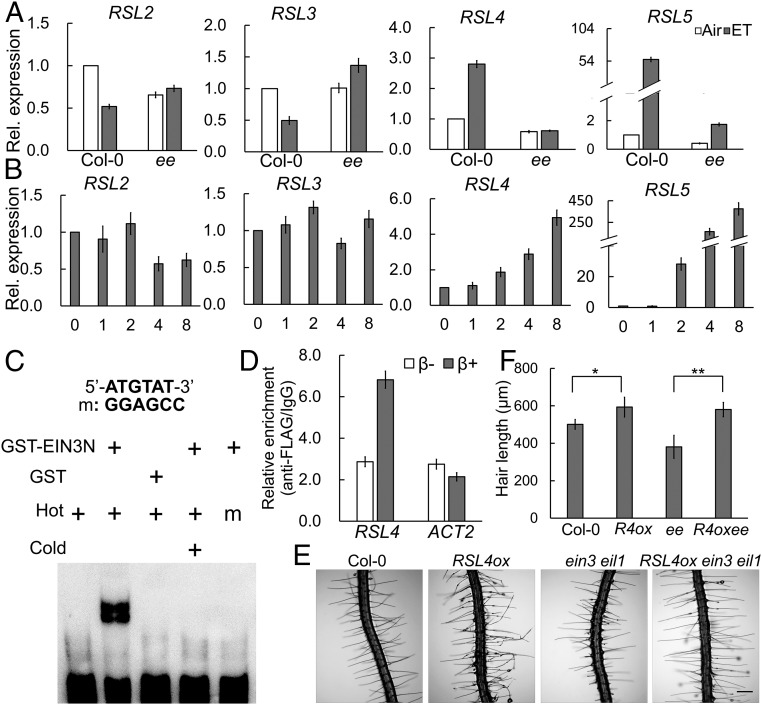Fig. 3.
RSL4 is a direct target of EIN3. (A) Relative (Rel.) expression levels of RSL class II genes in Col-0 and ein3 eil1 (ee) in response to ET. Six-day-old seedlings were treated with air or ET at 10 ppm for 4 h. (B) Rel. expression levels of RSL class II genes with EIN3 overexpression induction. Six-day-old iEIN3 ein3 eil1 ebf1 ebf2 (iEqm) seedlings were transferred to Murashige and Skoog medium containing 2 μM β-estrogen for the amount of time indicated on the x axis (hours). (C) In vitro EMSA showing EIN3 directly binding to the RSL4 promoter. (Upper) EIN3-binding site (ATGTAT, boldfaced) and the mutated form (GAAGCC) are shown. The GST-fused EIN3 N terminus (GST-EIN3141-352) was purified from E. coli. Unlabeled cold probe (200-fold) was added for competition. Probe containing the mutated binding site (m) was used to assess binding specificity. (D) ChIP-qPCR shows that EIN3 binds to the RSL4 promoter in vivo. The roots of 6-d-old iEqm were collected after incubation in 10 nM β-estrogen for 4 h to induce EIN3-FLAG overexpression. Fragmented chromatin was precipitated with anti-FLAG antibody. (E and F) RSL4 overexpression restored hair elongation in ein3 eil1. (E) Representative root hairs from Col-0, ein3 eil1, RSL4ox, and RSL4ox ein3 eil1. (Scale bar: 200 μm.) (F) Quantification of root hair length in E. Data are means ± SD (n = 10 roots). R4ox, RSL4ox. One-way ANOVA with a post hoc Tukey HSD test (**P < 0.01, *P < 0.05) was used.

